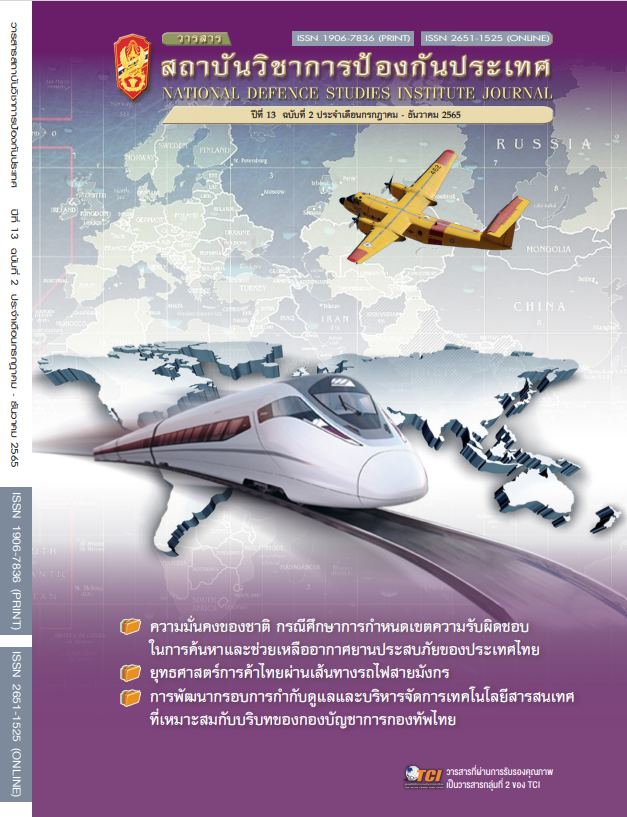An Online Active Learning Model Under Uncertain Circumstances
Main Article Content
Abstract
An Online Active Learning Model Under Uncertain Circumstances was developed to be used to conduct learning that cannot be performed in either regular classrooms or virtual classrooms due to the spread of the coronavirus disease 2019 (COVID-19) and various disasters. Learning theory and basic information technology are employed as a conceptual framework in order to provide the easiest and most convenient access to learning resources, allowing learners to acquire the knowledge required by the curriculum and 21st century skills. The model consists of five steps: preparing learning resources, studying lessons, assigning coursework, submitting coursework, and evaluating. A trial was conducted at the Automotive Technology Section, Military Technical Training School, National Defense Study Institute in the first semester of the 2021-2022 academic year. The results showed that teaching and learning can be carried out continuously regardless of the circumstances. Compared to general online learning, students achieve better academic performance and have a more positive attitude towards learning, more time for their personal activities and less stress. Though teachers must adjust during initial preparation, they gradually become more proficient.
Article Details

This work is licensed under a Creative Commons Attribution-NonCommercial-NoDerivatives 4.0 International License.
The articles, images, tables, graphs, written content, and opinions published in this journal are solely those of the authors and do not necessarily reflect the views or positions of the National Defence Studies Institute or its academic affiliates.
References
Ambrose, S.A., Bridges, M.W., DiPietro, M., Lovett, M.C., & Norman, M.K.. (2010). How Learning Works: Seven Research-Based Principles for Smart Teaching. USA: Jossey-Bass A Wiley Imprint.
Anderson, H. M. (2013). Dale's Cone of Experience. University of Kentucky.
Bowen, R. S. (2017). Understanding by Design. Vanderbilt University Center for Teaching. Retrieved July 20, 2021 from https://cft.vanderbilt.edu/understanding-by-design/
Edutechwiki. (2019). Constructionism. Retrieved June, 14, 2021 from http://edutechwiki.unige.ch/en/Constructionism
Fink, L. D. (2005). Integrated Course Design. IDEA Paper, 42, 1-7.
Huitt, W. (2011). Bloom et al.'s taxonomy of the cognitive domain. Educational Psychology Interactive. Valdosta, GA: Valdosta State University. Retrieved July 8, 2021 from http://www.edpsycinteractive.org/topics/cognition/bloom.html [pdf]
Janoska, L. (2017). What Really Is The Cone Of Experience?. Retrieved July 12, 2021 from https://elearningindustry.com/cone-of-experience-what-really-is
Kudryashova, A., Gorbatova, T., Rybushkina, S., & Ivanova, E. (2016). Teacher’s Roles to Facilitate Active Learning. Retrieved July 3, 2021 from http://www.richtmann.org/journal/index.php/mjss/article/view/8696
Mertler, C.A. (2001). Designing Scoring Rubrics for Your Classroom. Retrieved July 27, 2021 from https://www.qu.edu.qa/static_file/qu/colleges/cas/College%20Departments%20and%20offices/ADAA/PLO/Designing_rubrics.pdf
Midway University. (2019). Quality Course Design. Retrieved July 25, 2021 from https://midway.libguides.com/c.php?g=473190&p=3244781


